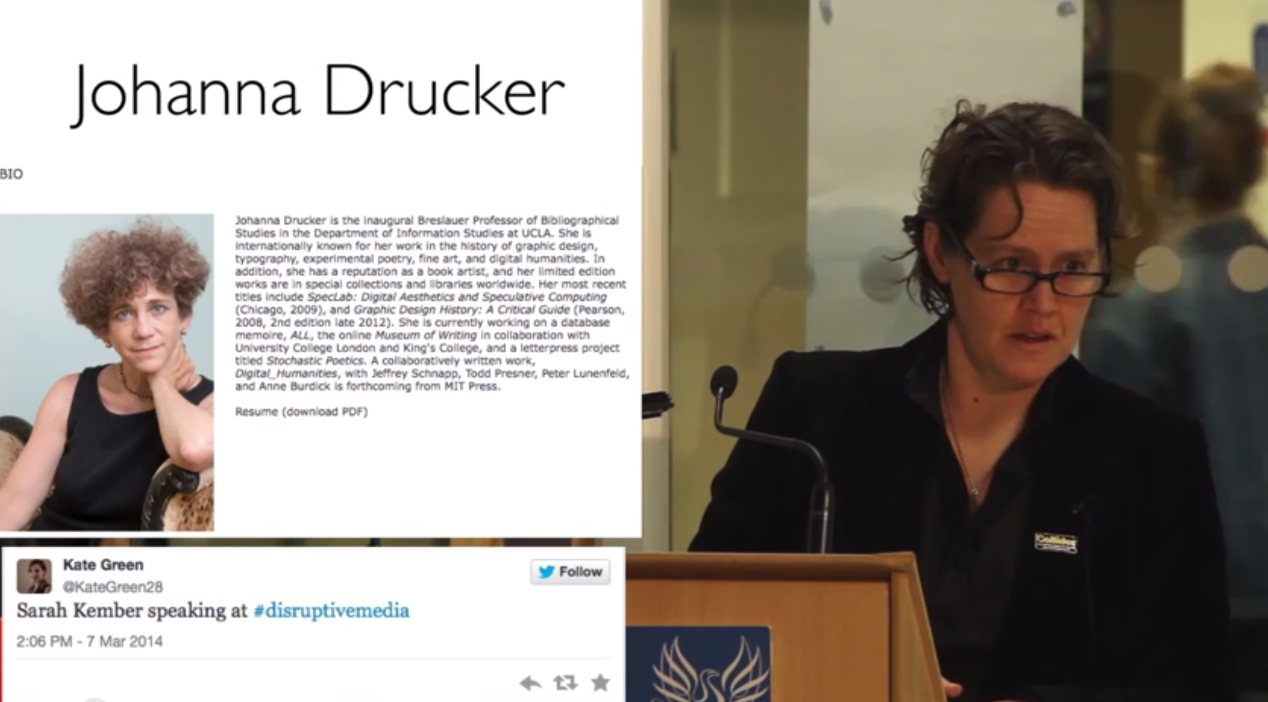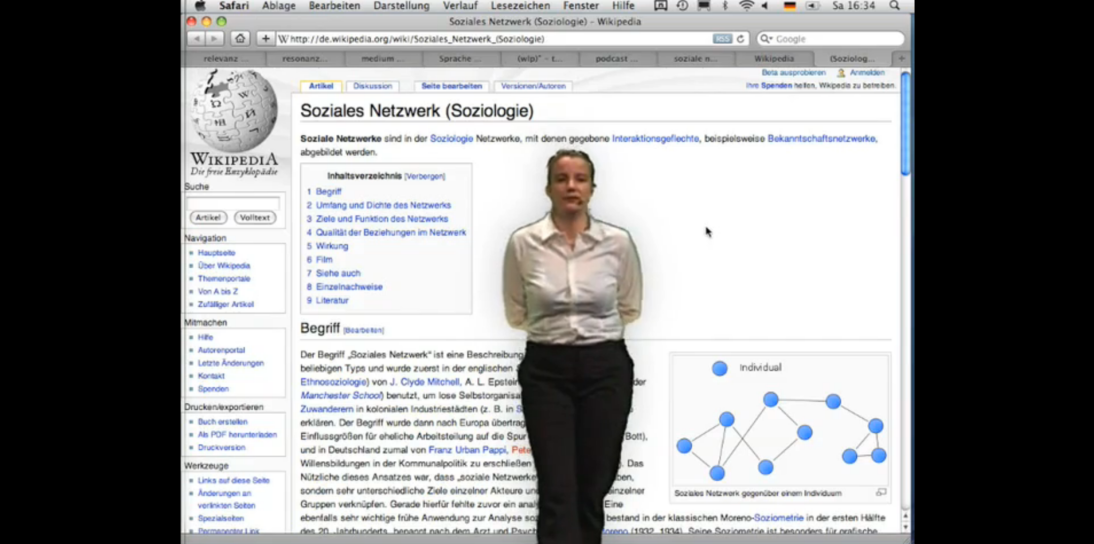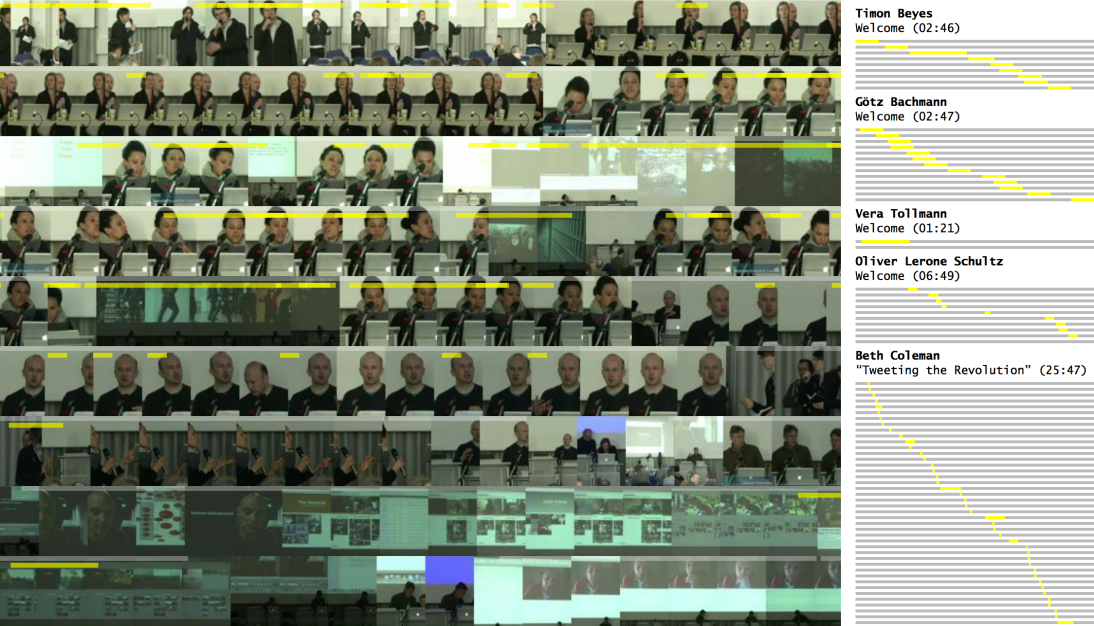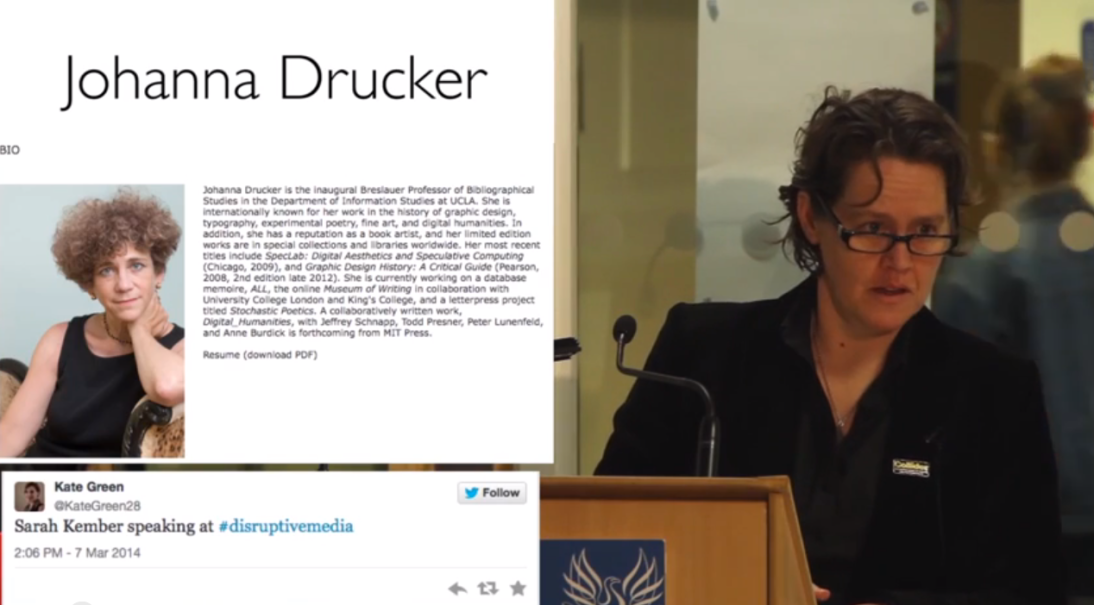Experiments in editing
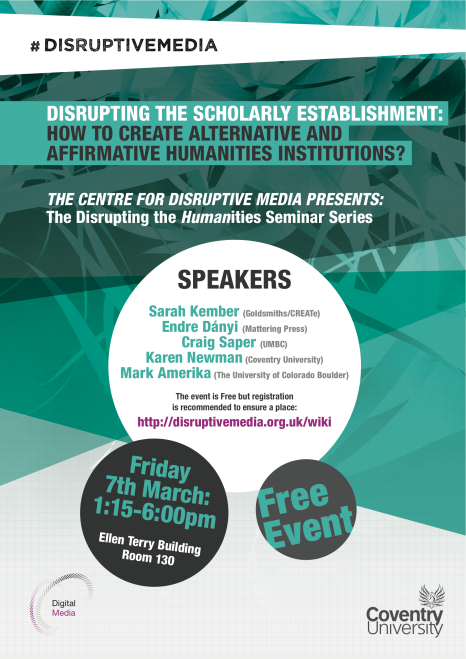 On March 7th of this year we ran our first seminar as part of the Disrupting the Humanities Seminar Series at Coventry University, which has been organised by the Centre for Disruptive media. You can find more information about this series here.
On March 7th of this year we ran our first seminar as part of the Disrupting the Humanities Seminar Series at Coventry University, which has been organised by the Centre for Disruptive media. You can find more information about this series here.
The videos for this seminar, entitled ‘Disrupting the scholarly establishment. How to create alternative and affirmative humanities institutions?’ have now been posted online.
You can find a recording of the entire seminar on the wiki here, and underneath that recording, you can find videos of the separate papers presented by Sarah Kember, Endre Dányi, Craig Saper, Karen Newman and Mark Amerika.
We have also set up a playlist on youtube, if you find watching the videos there more convenient.
I have also embedded a recording of the entire seminar underneath:
I want to provide some background to the specific way we have edited these videos here, and the way we have actively annotated them as part of the editing process. Most of the credit for this goes to two of our Media Production students, Konrad Maselko and Johnathan Aldrich, who have been heavily involved in the conceptualising, planning, recording, and editing of the videos.
Concept
Our primary reason to record the papers and the event as a whole (including the audience responses, questions and social media engagement) and to publish them online on our research and publication platform, has not only been to make these videos available for people who were not able to attend the event, and to share them with the wider public. Although this is of course an important reason for publishing them online, what we also aimed to do, in many ways, is question and break down the barriers that still exist between the research process and the final publication, and between the paper and the publication. In our current scholarly communication system it is mainly the final publication that is made publicly available (if not behind paywalls), and not the research process itself, in this way favouring a vision of research as a finished, bound and static object, mostly created by a single individual or set of individuals. In this respect, as part of this project (which is also a publishing project) we want to put more emphasis on the process of knowledge production and in this specific case on presentations and papers as an important part of sharing, improving and building upon knowledge in a collaborative conference setting. But this also means challenging the way most conferences have been set up to mirror the final publication phase. The aim of this series of seminars has therefore been to experiment with opening up and rethinking the way we conduct conferences and seminars within The Centre for Disruptive Media in specific and within the humanities more in general. Following the format proposed here, the idea is to challenge the time- and location-bound format of the conference, as well as, in some ways, the still ‘self-contained’ and solistic nature of a conference paper. With this format we also want to start breaking down the barriers that exist between a ‘conference’ and a ‘publication’, turning these events into rich collections of resources than can be re-used and re-assembled.
Inspiration
To achieve this we were very much inspired by some of the experiments that Sybille Peters has conducted to break down what she calls ‘the research/presentation divide’ in scholarship. For instance in art practice and research this divide is often not as clear-cut, where the performance of the artistic research is often part of the same research. As she states: ‘from the viewpoint of scientific tradition, research itself and the public presentation of its outcomes are two different things – research first, presentation second. In the performing arts this is different; here, research is deeply intertwined with presentation: Artistic research is part of the process of preparing a public presentation. And vice versa the presentation itself is a main part of the research process, a test-scenario.’1 The conference presentation or the lecture is thus not part of the process of knowledge production she states, but merely a form of knowledge presentation.
Our focus here is therefore on the material and performative aspects of a conference paper, including the setting in which it takes place, where a presentation is not a simple representation of the text-on-paper argument presented by the author, but a rich entanglement of presenters, audiences, media, technologies, facilitators, expectations, cultural practices, and institutions, that all contribute to the conference as it comes into being.
In what sense can we then envision the conference itself as both part of the research process (instead of merely representing the research), as well as a form of publication where the communal, curated holistic aspect of the conference as networked event with a variety of actants, can be highlighted against the single-authored product
that is supposedly to emerge out of these conferences? And in what sense does this also mean a rethinking of the way we set up and conduct conferences online and offline at the moment? How can we turn conferences or seminars, as Peters states, into: ‘an interactive setting of collective knowledge production’? Do we for instance always need to present new material? Or would it for instance be interesting to revisit and discuss older (conference) material(s), or to juxtapose earlier material with new material? How can we highlight the debate around a presentation, the critique, the comments, and the communal aspects of knowledge production and transmission? How can we turn what is increasingly a digital conference platform into a reusable publishing and communication platform?
Hybrid Video Reader
Whilst we were thinking about how to edit our video material, we came upon another interesting project (thanks to Oliver Lerone Schultz) that has done something similar to what we aimed to achieve. The team behind the 9th Video Vortex conference, made what they called a ‘hybrid video reader’ documenting the conference as it evolved, which you can find here. To achieve this they used InterLace, an open source software program developed by Robert Ochshorn. Schultz describes the reader as ‘an annotated timeline of the conference’, where ‘the interface attempts to supply the user with as much cultural context and scholarly resources as possible, using embedded footnotes as well as online and offline references, thus creating an amalgam of both digital and analog ‘reading’ cultures.’ For the hybrid video reader team, the aim was also very much to go beyond representation, where in their involvement in the editing process they actively created a new networked knowledge environment. In this sense they have experimented with the new digital possibilities to document and, not so much represent as extend events I would say, adding an additional layer of connections to the research presentations and process.
Realisation
Next to breaking down barriers between a final publication and a paper, to show the research in process, we also wanted to highlight how collaborative this process is. This entails making connections with previous research on the themes and topics of this seminar and its papers. To make these connections we provided space on the wiki for resources. Textual and multimedial resources have been uploaded by the speakers specifically, but we also created separate pages where anyone can upload and embed links and references to materials they feel connect to the seminar, here and here.
We further emphasised these connections whilst editing the videos. What we, among other things, set out to do is experiment with ways to make these videos more interactive, to break down the barriers between the presentations and the audience a bit more, and to also give some more space in the final edit, for audience responses and for connections to other works. Our first ideas centred around emulating an experiment Sybille Peters did during a presentation, in which a collaborator used a projected screen behind her to interact with her talk as it happened, by browsing the web. We were interested in a similar experiment with a separate screen (or screens) on which the audience ‘interactions’ with a talk could be captured. However, although we are still interested in working with this concept, for this specific seminar—for which we were also skyping in two speakers—we decided this might be too technically challenging. We however went on to do something similar during and as part of the editing process, which is quite like what has been done for the Video Vortex reader. We decided to heavily annotate the videos, imitating in a sense the actions of an active participant, looking up concepts, persons and projects on the web during an interesting paper. We also integrated the audience reactions that were collected via twitter, and we inserted screenshots, images, references, links and video and audio materials related to the various projects, concepts, persons and ideas mentioned during the presentations. Again, to mirror what an attentive audience contributor might potentially do on his or her computer as a form of active interaction with the paper, but also to establish clearer connections between the papers and the various online and offline resources they refer to.
This very much remains an experiment and research in process, and we are aiming to try-out some more things as part of the recordings for the next two seminars (of which one was recently held, and the next will hopefully take place in October). Any suggestions and ideas are always welcome.
